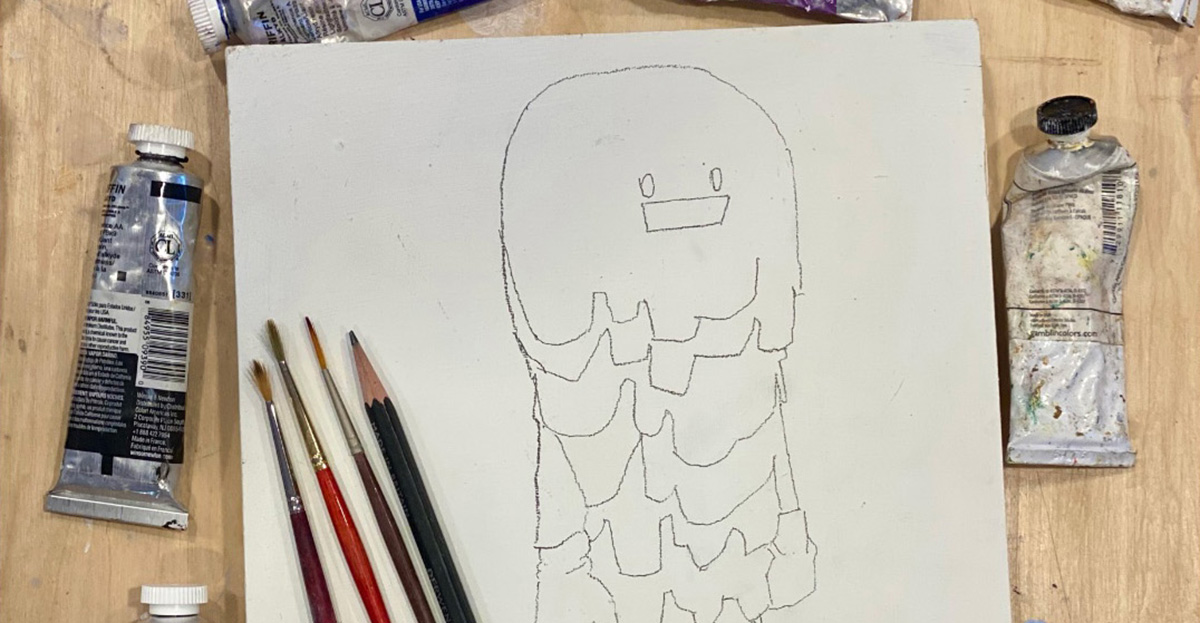- Events & Programs Home
- Calendar
- Accessibility
- Adults
-
Families & Teens
- Families & Teens Home
- 10x10 Teen Art Expo
- Art on the Rise
- Art Together: Art Making for Families with Children Ages 3–5
- Babies Sing with May Festival Minis
- Boy Scouts / Girl Scouts
- CAM Kids Day
- Family Storytime and Gallery Walk
- Family Studio: Art Making for Families with Children Ages 6–12
- Games in the Galleries
- Members-Only Baby Tours
- Public Baby Tours
- REC Reads
- Rosenthal Education Center (REC)
- Saturday Morning Art Class
- See Play Learn Kits
- Summer Camp
- Teen Fest: Zine and Comic Exchange
- RECreate
- Teachers
- Community Outreach
- Fundraisers
- Plan Your Own Event

- Events & Programs Home
- Calendar
- Accessibility
- Adults
-
Families & Teens
- Families & Teens Home
- 10x10 Teen Art Expo
- Art on the Rise
- Art Together: Art Making for Families with Children Ages 3–5
- Babies Sing with May Festival Minis
- Boy Scouts / Girl Scouts
- CAM Kids Day
- Family Storytime and Gallery Walk
- Family Studio: Art Making for Families with Children Ages 6–12
- Games in the Galleries
- Members-Only Baby Tours
- Public Baby Tours
- REC Reads
- Rosenthal Education Center (REC)
- Saturday Morning Art Class
- See Play Learn Kits
- Summer Camp
- Teen Fest: Zine and Comic Exchange
- RECreate
- Teachers
- Community Outreach
- Fundraisers
- Plan Your Own Event
Blog: CAM Uncovered
Blog: CAM Uncovered
- Home
- Plan Your Visit
- Art
-
Events & Programs
- Events & Programs Home
- Calendar
- Accessibility
- Adults
-
Families & Teens
- Families & Teens Home
- 10x10 Teen Art Expo
- Art on the Rise
- Art Together: Art Making for Families with Children Ages 3–5
- Babies Sing with May Festival Minis
- Boy Scouts / Girl Scouts
- CAM Kids Day
- Family Storytime and Gallery Walk
- Family Studio: Art Making for Families with Children Ages 6–12
- Games in the Galleries
- Members-Only Baby Tours
- Public Baby Tours
- REC Reads
- Rosenthal Education Center (REC)
- Saturday Morning Art Class
- See Play Learn Kits
- Summer Camp
- Teen Fest: Zine and Comic Exchange
- RECreate
- Teachers
- Community Outreach
- Fundraisers
- Plan Your Own Event
- Give & Join
- About
- Tickets
- Calendar
- Exhibitions
- Collections
- Blog
- Shop
On Tessellations and Turtles – SketchCAM
by Bruce Petrie, President, Board of Trustees
2/6/2025
SketchCAM’s roving sketchbook is always on the lookout for tessellations, which you can discover all over the place, including CAM.
A tessellation is a geometric pattern of shapes that fit together and can repeat infinitely. For starters, think checkerboards, tile floors, honeycombs, soccer ball patterns—but tessellations go way beyond these familiarities, taking an infinite number of shapes and forms.
Tessellations for centuries have intrigued and amazed mathematicians, physicists such as Nobel Laureate Roger Penrose, modern artists including M.C. Escher, as well as the ancient and contemporary arts of Indigenous peoples and world religions. Some ascribe a spiritual dimension to tessellations because their endless repeatability nudges the imagination to envision infinity. Tessellations in Middle Eastern art go back as far as 3,000 BCE. The worldwide art of folding paper, origami, uses tessellation patterns to create amazing sculptural work.
Tessellations point to the unity of art and science, a fundamental geometry which modern physicists, biologists, and naturalists are discovering throughout the universe.
Now, how about we bring this down to earth and onto our sketchbooks? It always helps to understand something if we have a way to make, draw, or visualize it. It’s one thing to theorize that tessellations may tweak our imaginations about infinite patterns, it’s yet another to make one, experience self-repeating design, and see something arise that appeals aesthetically.
Let’s go step by step to make a tessellation inspired by the natural design of a sea turtle.
Step 1: Start with a simple note card. Draw the design in pencil. Cut a piece from the right side and attach it to the opposite side.
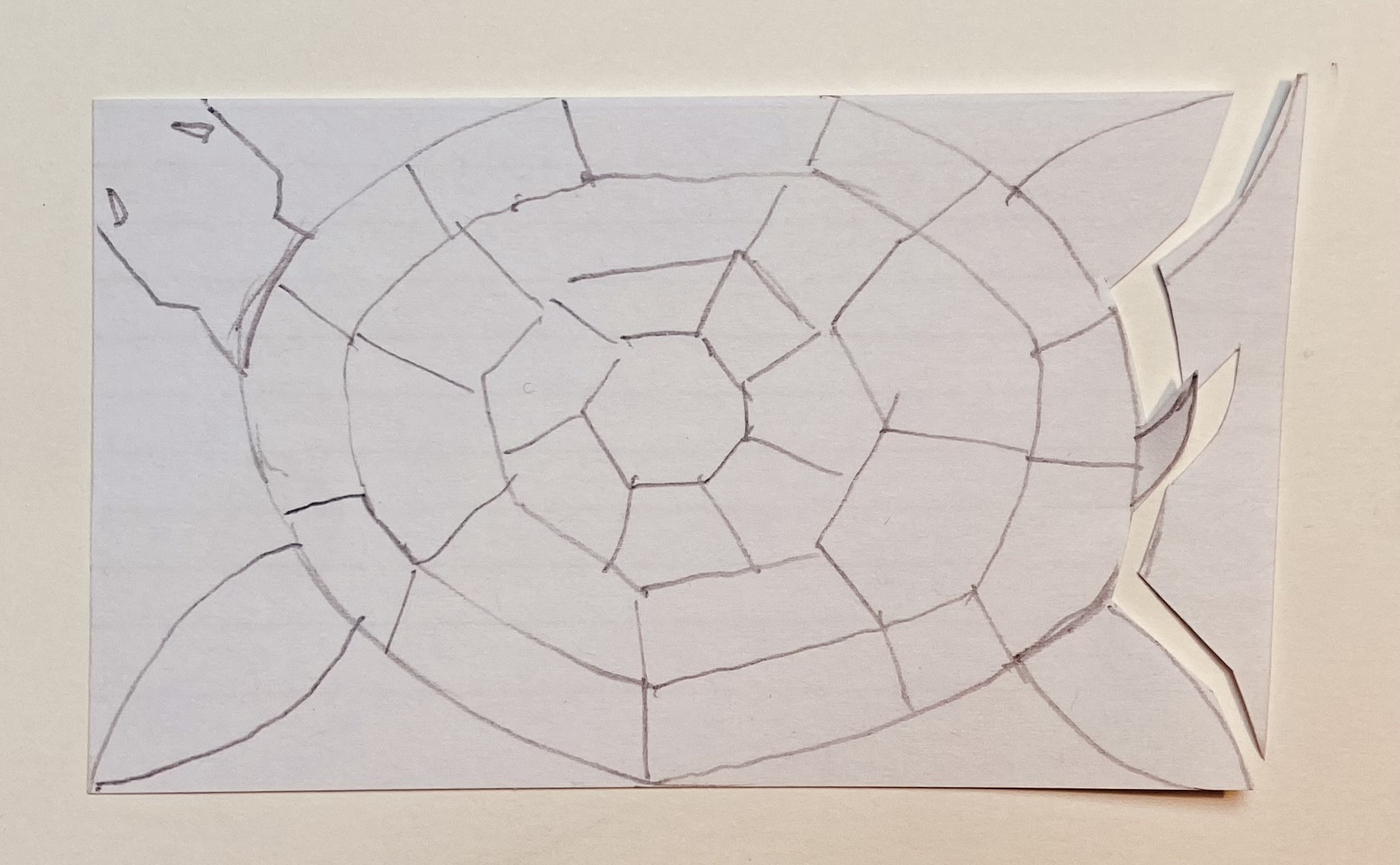
Step 2: Cut a shape from the bottom edge and tape it to the top. Now we have our turtle tessellation.
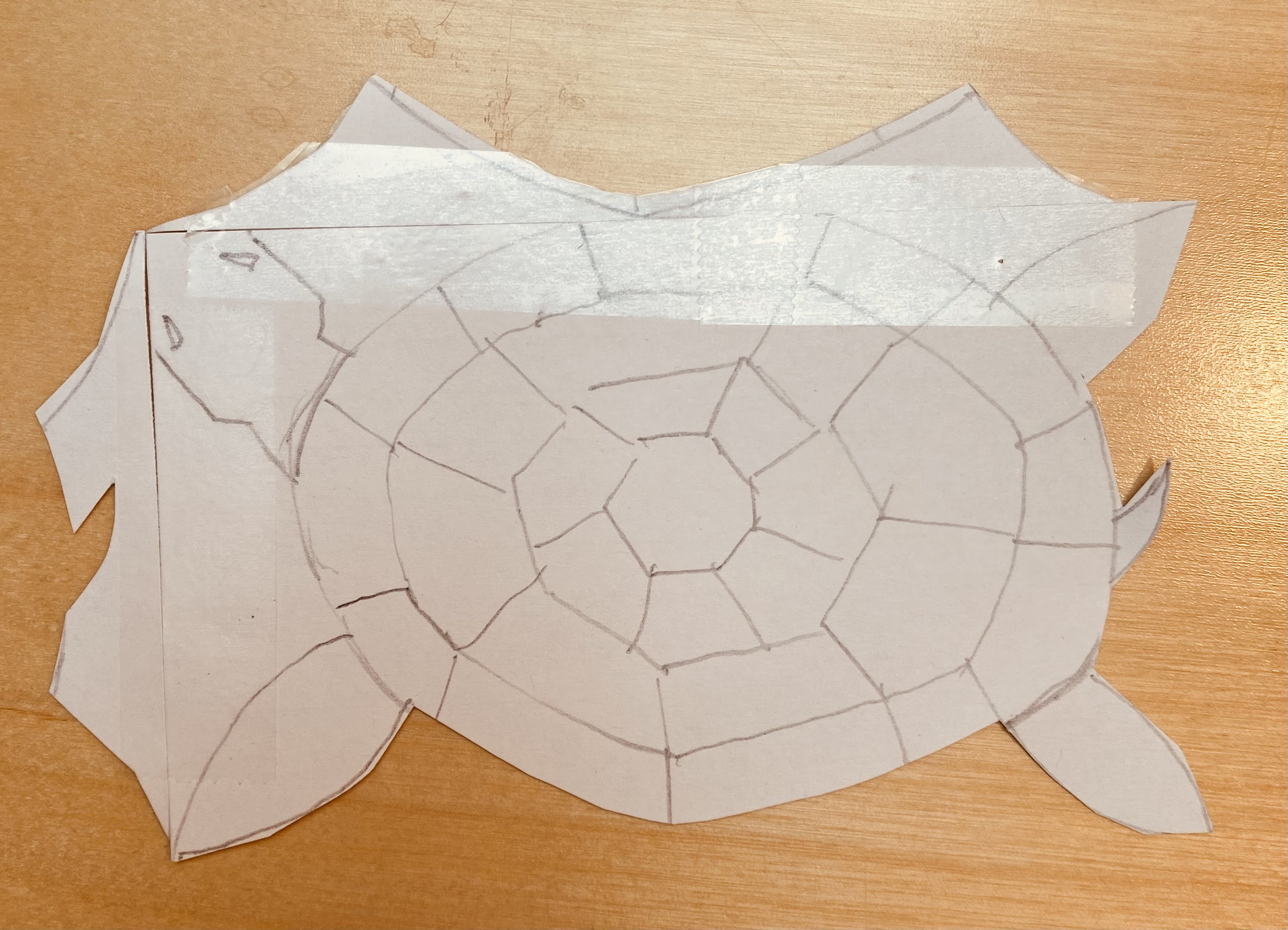
Step 3: Trace the outside of the pattern, fitting it piece by piece across a sheet of paper.

Step 4: Punch dots through the pattern (I use a wood screw), marking the paper below with dots to guide dot-to-dot connecting.
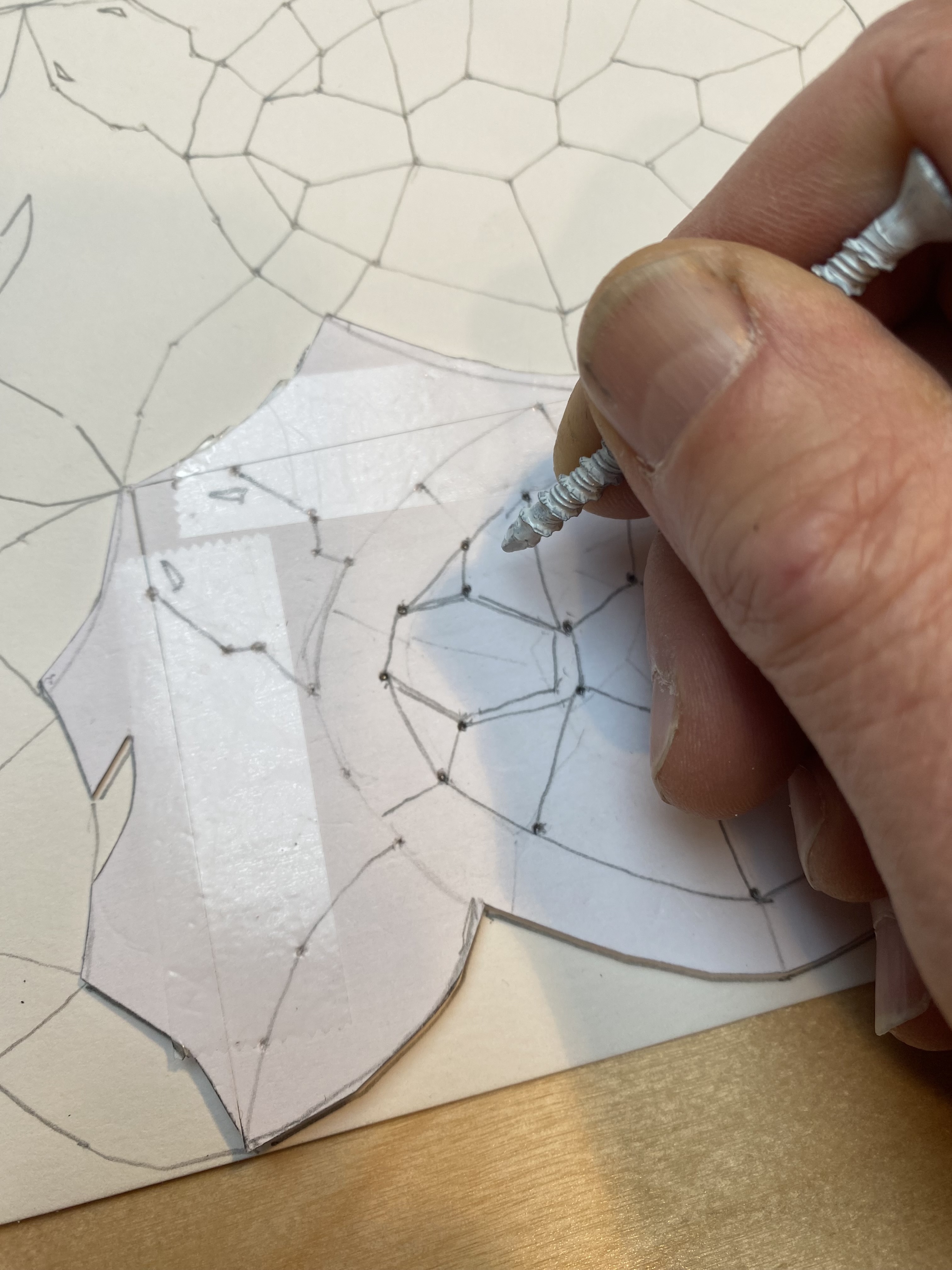
Step 5: Here’s the aha! moment when these turtles could swim on and on off the page! Note that the shell patterns of real sea turtles have a tessellating design which is distinctive to each type of turtle. Art & Science!
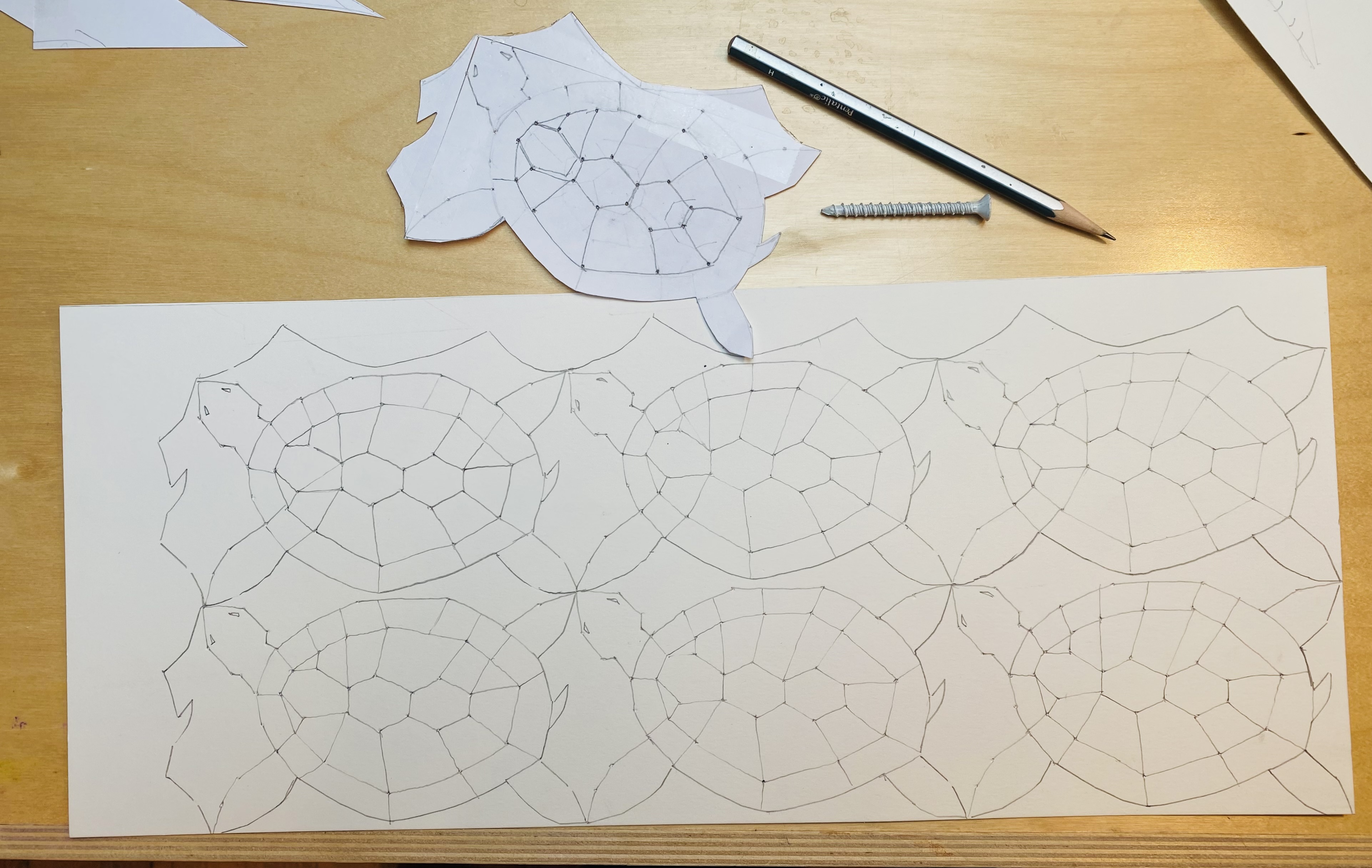
Step 6: Add watercolor to retain the underlying tessellation while adding a colorful free form, a principle of visual arts design using both harmony and contrast.
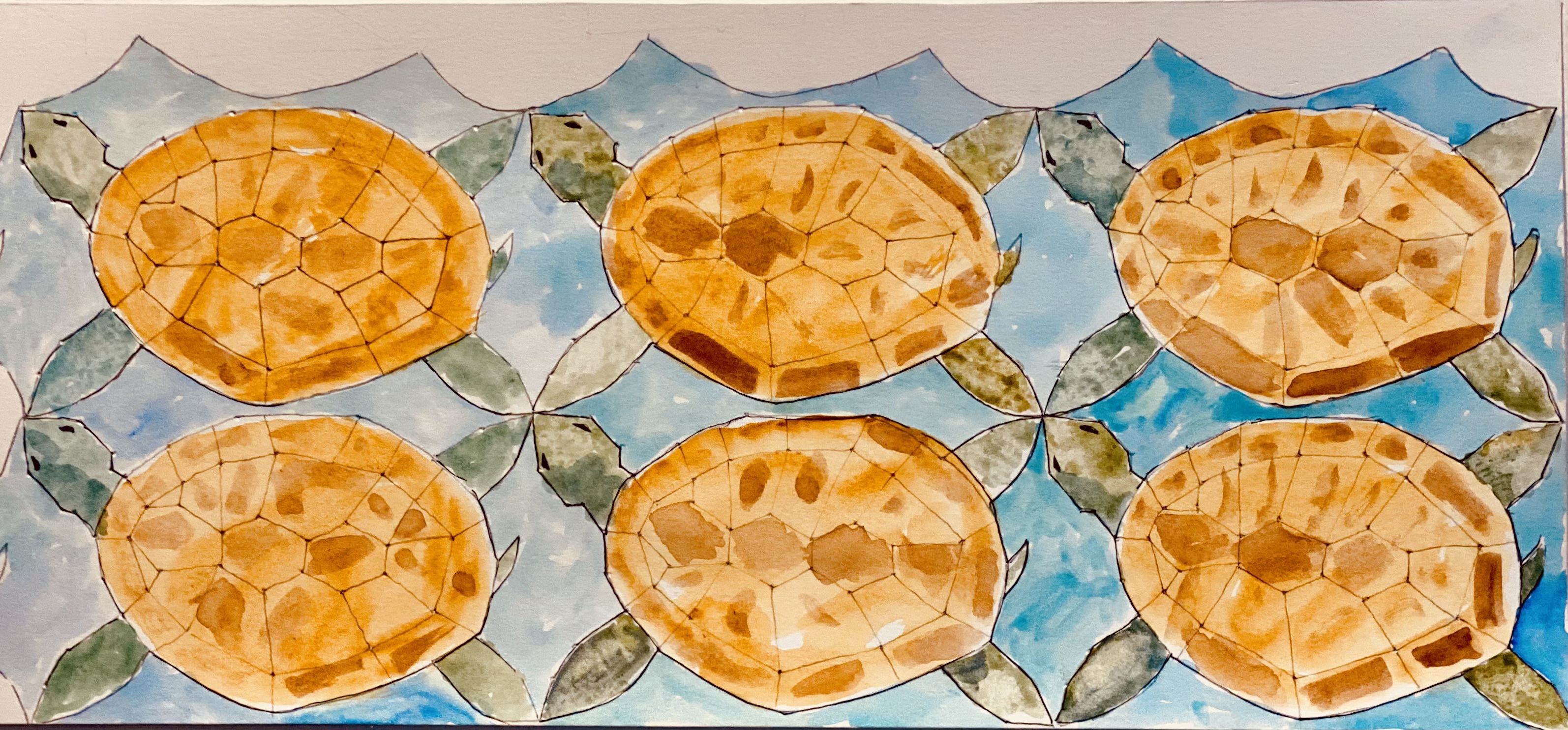
In this Pueblo jar from the museum’s collection, Mary Lewis Garcia (American, 1923–2015) created a design masterpiece using tessellating forms.
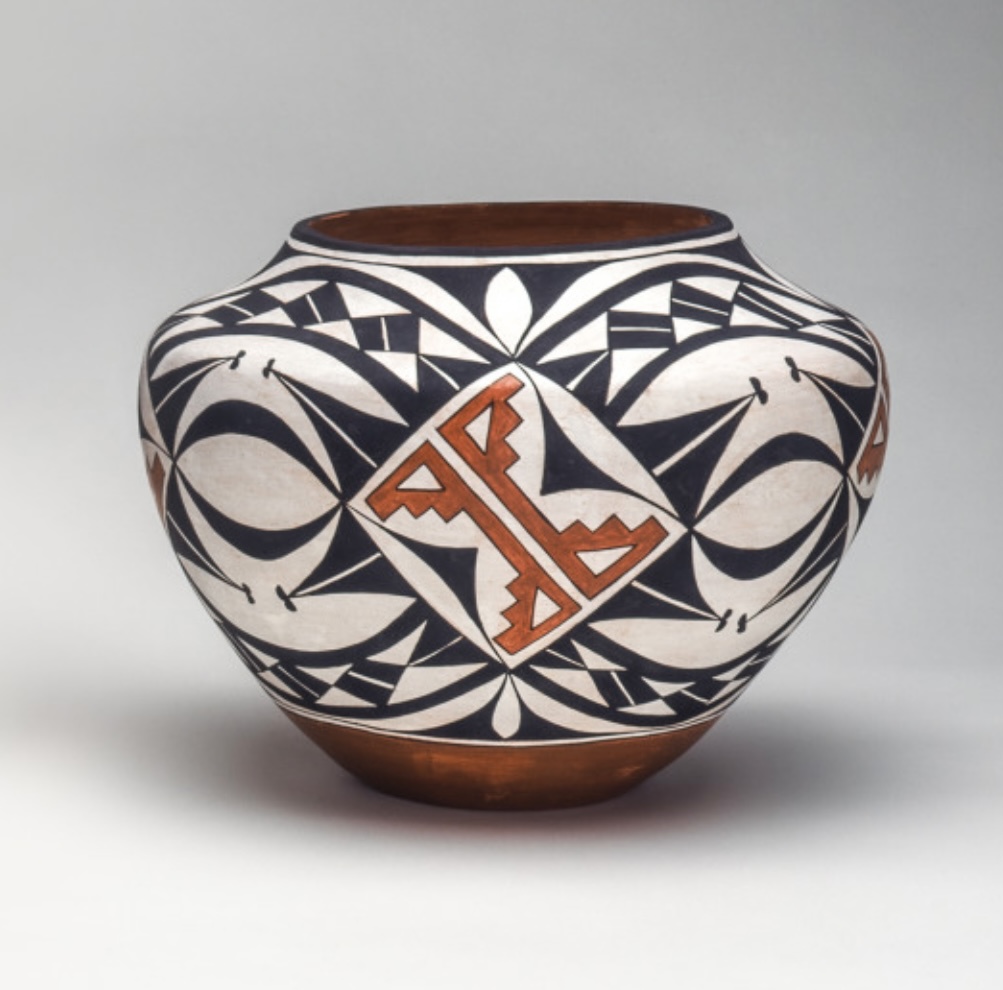
Jar, 1994, United States (Acoma Pueblo, New Mexico), Mary Lewis Garcia (American, 1923–2015), artist, ceramic, Gift of Mr. and Mrs. L. Harold Wehling; Daniel and Irene Randolph; Charles and Harriet Edwards, 1994.243
See you soon at CAM where there’s a universe to discover!
Related Blog Posts
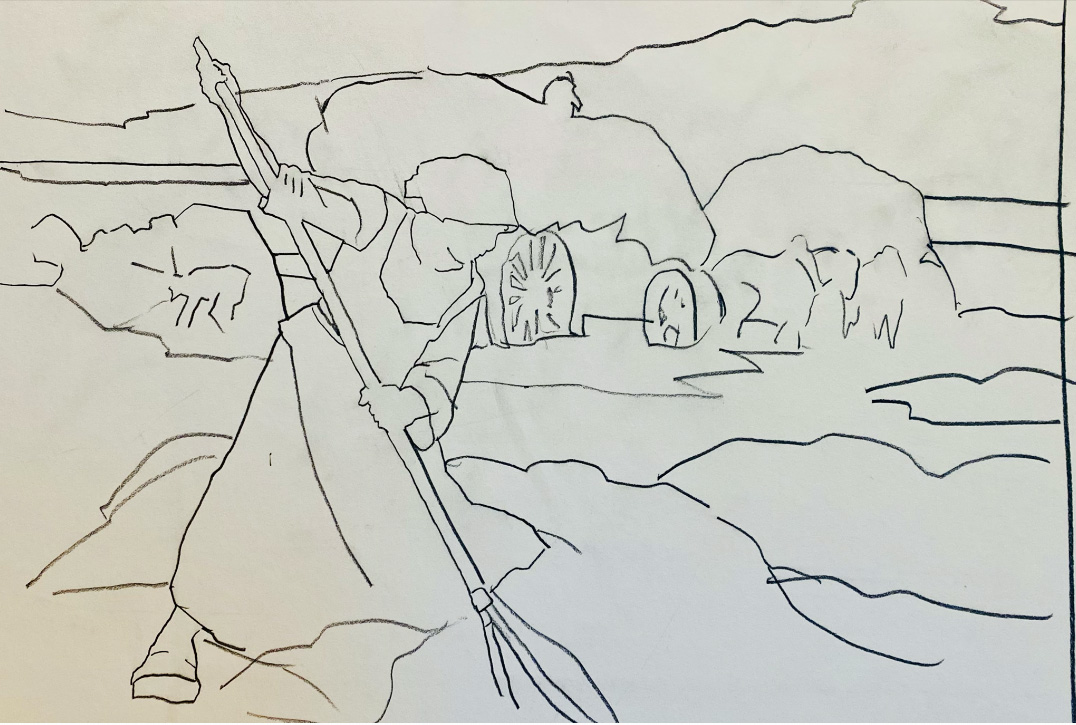
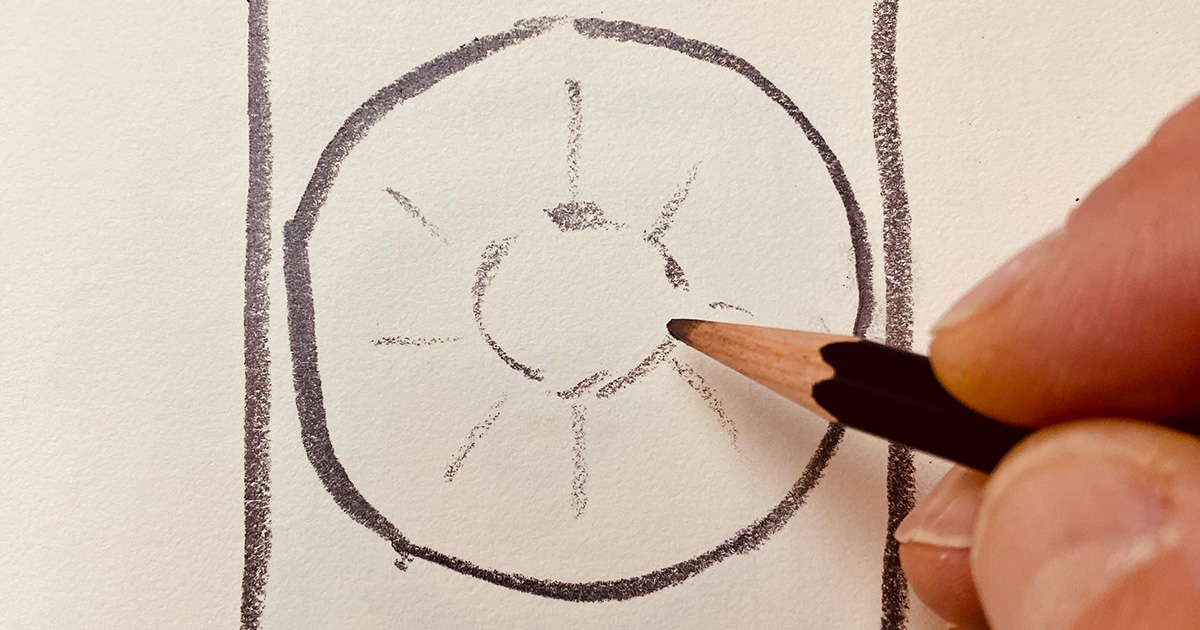
Cincinnati, OH 45202
Toll Free: 1 (877) 472-4226
Museum Hours
Museum Shop
Terrace Café
Library
Cincinnati Art Museum is supported by the tens of thousands of people who give generously to the annual ArtsWave Campaign, the region's primary source for arts funding.

Free general admission to the Cincinnati Art Museum is made possible by a gift from the Rosenthal Family Foundation. Exhibition pricing may vary. Parking at the Cincinnati Art Museum is free.
Generous support for our extended Thursday hours is provided by Art Bridges Foundation’s Access for All program.

General operating support provided by:



